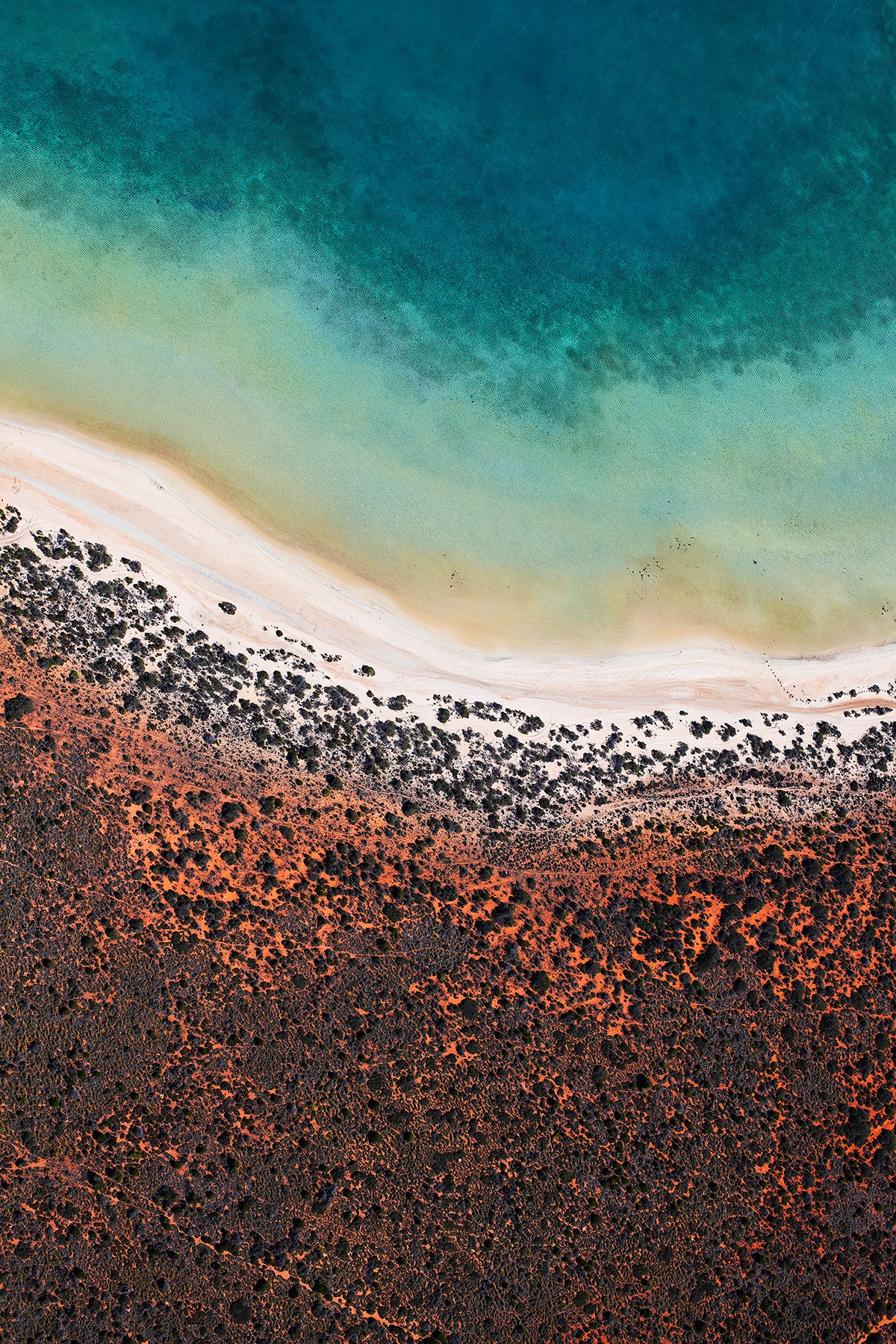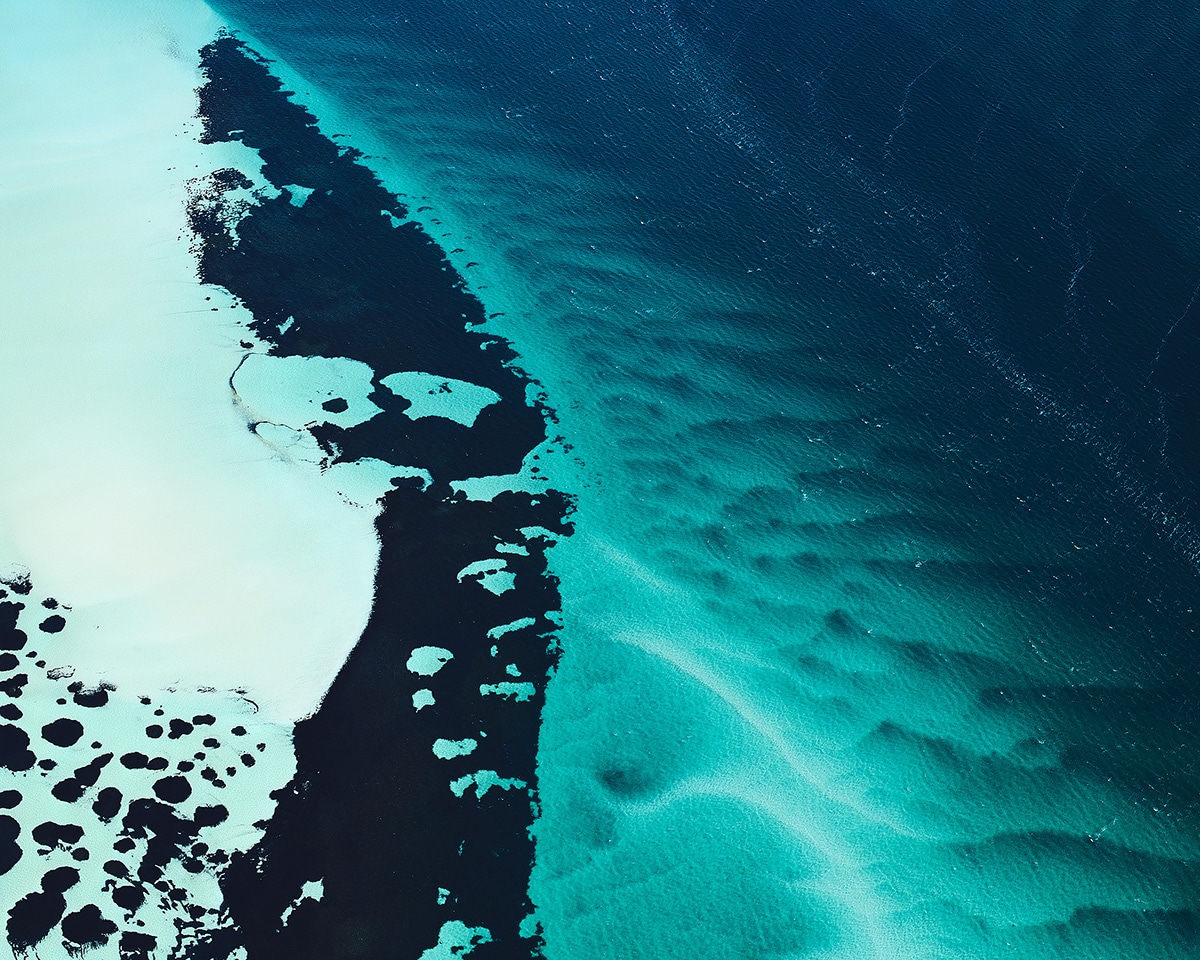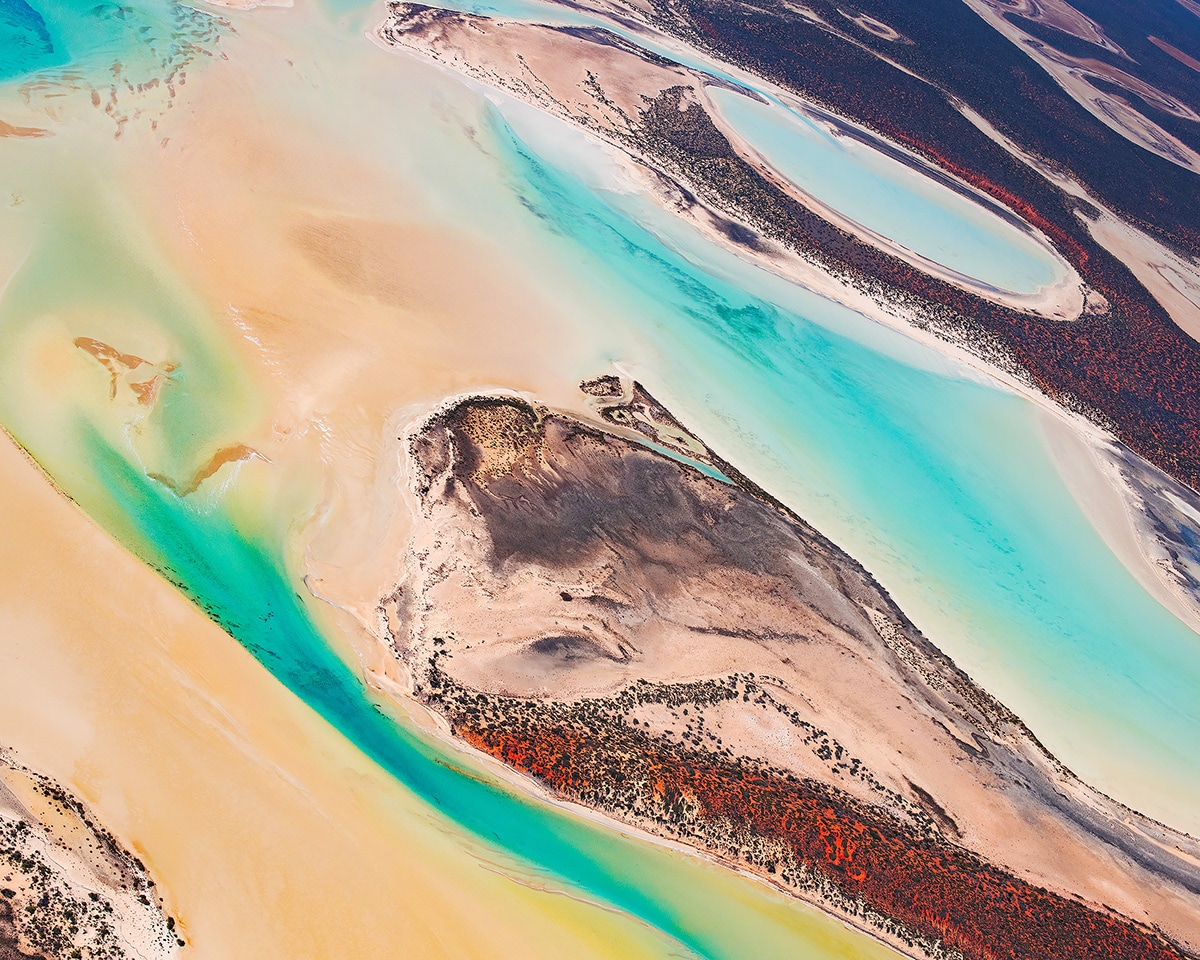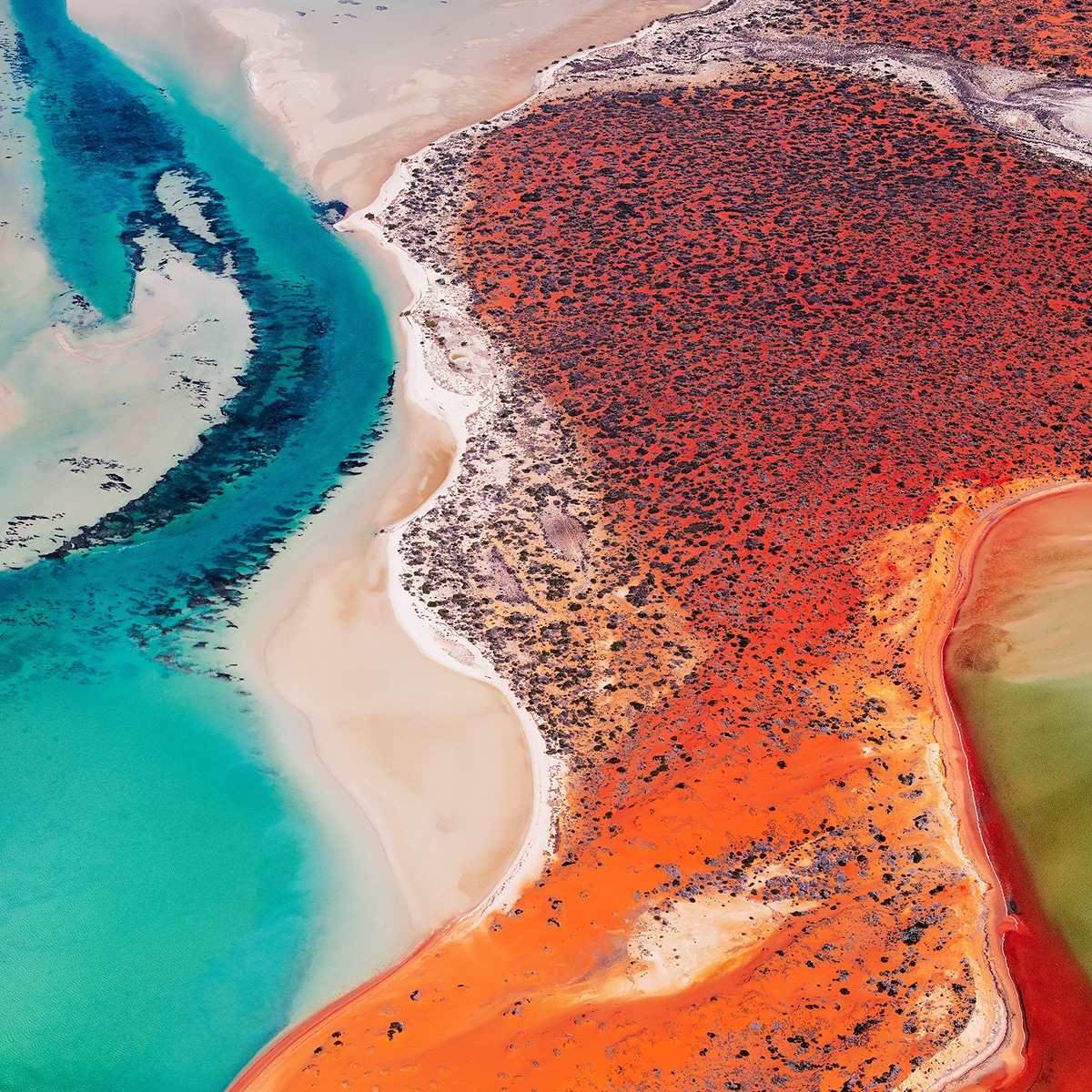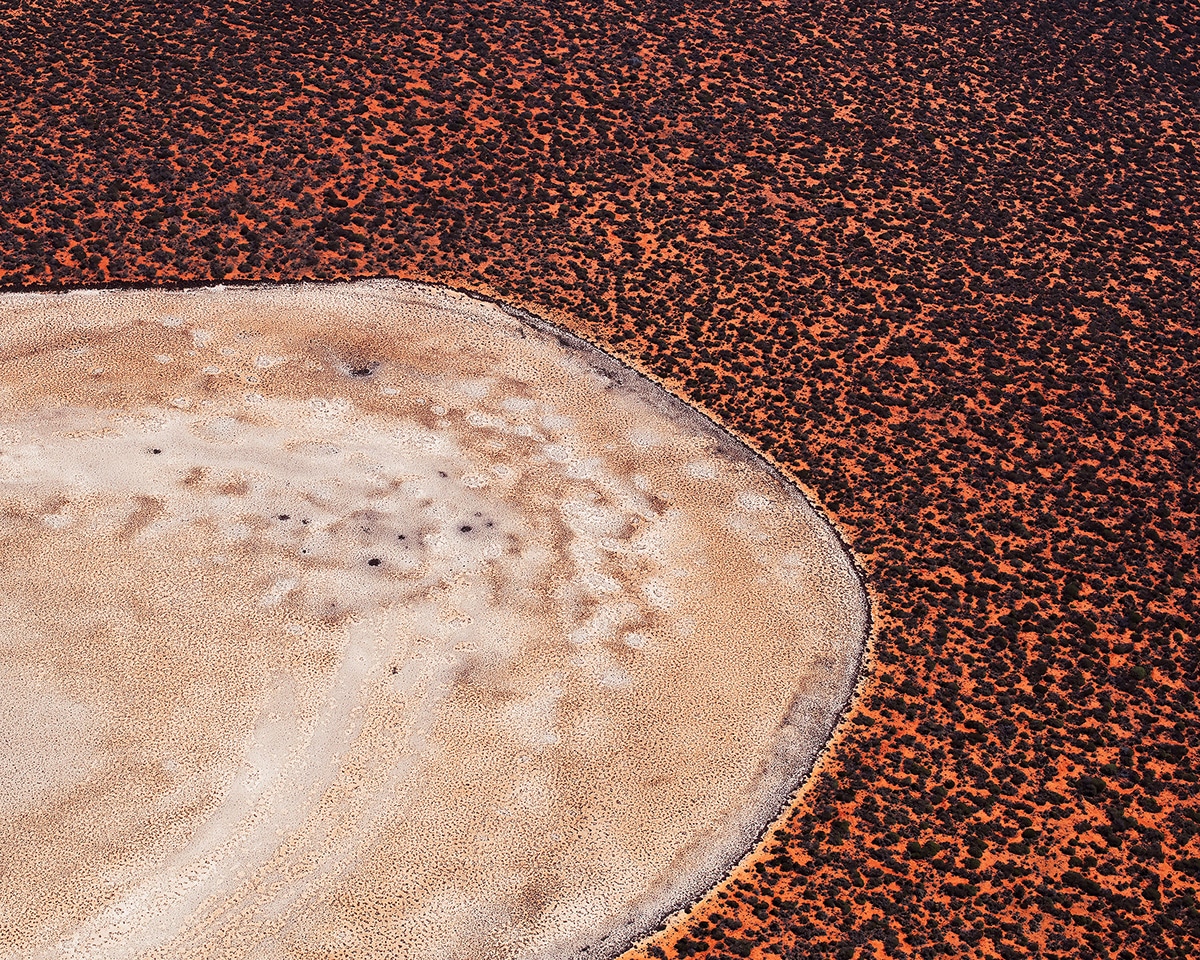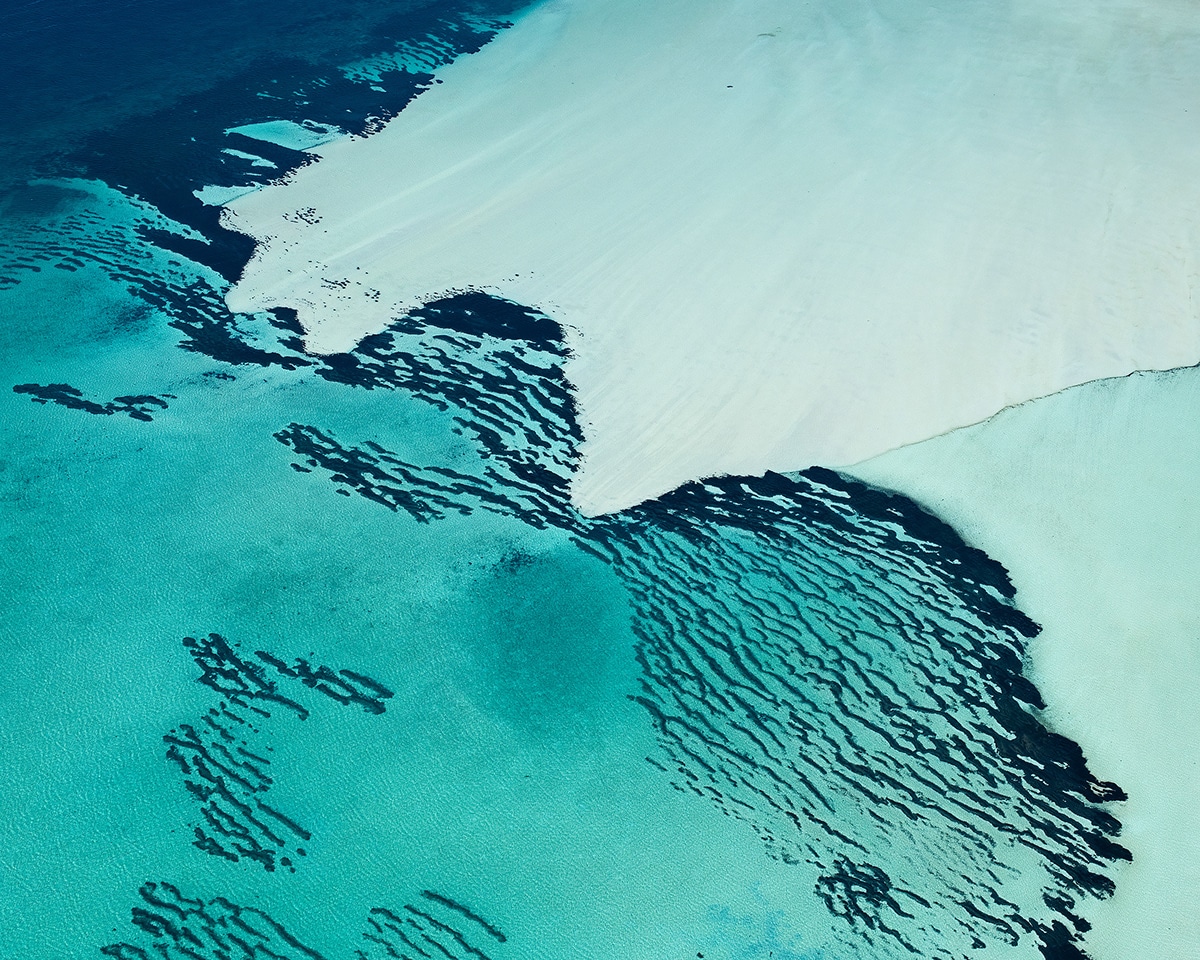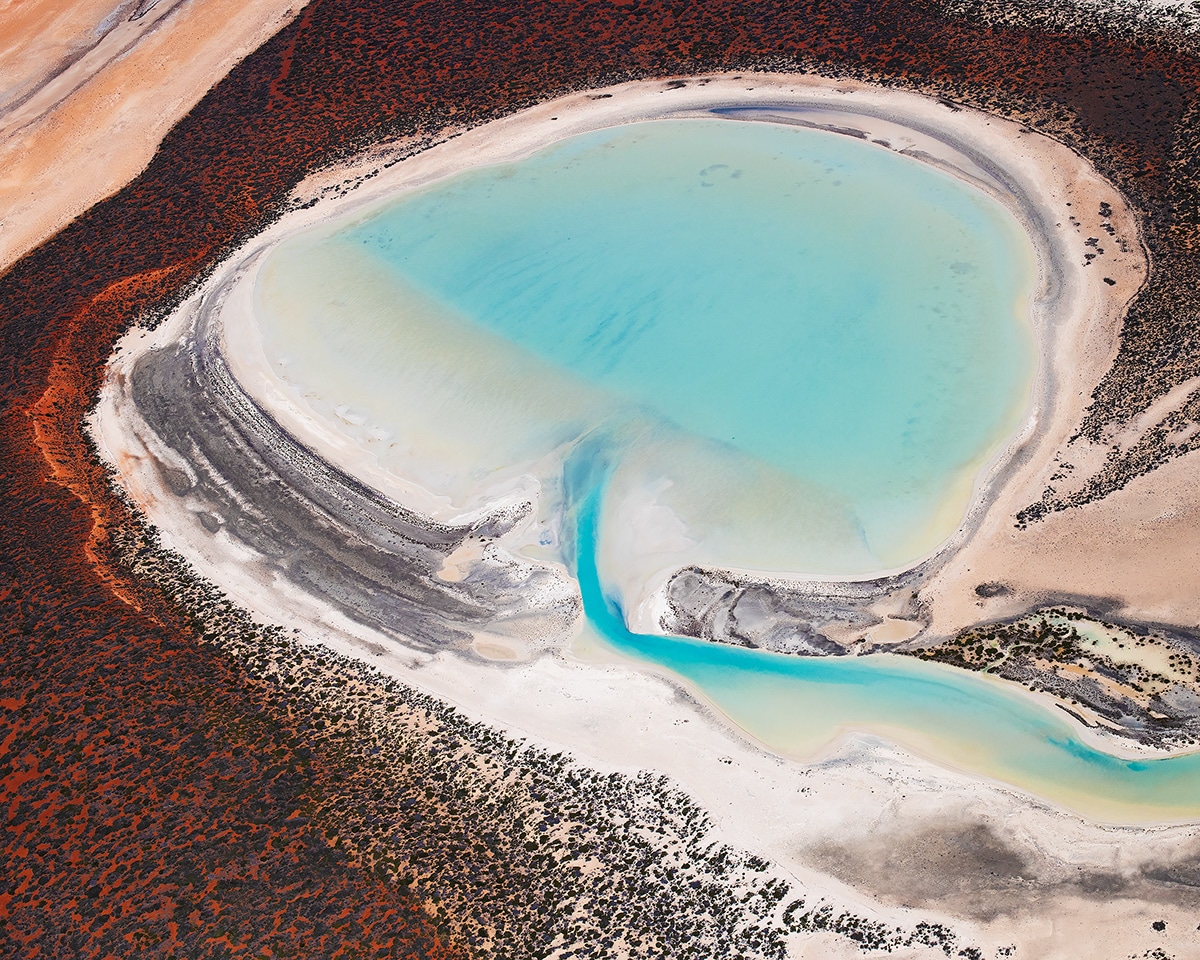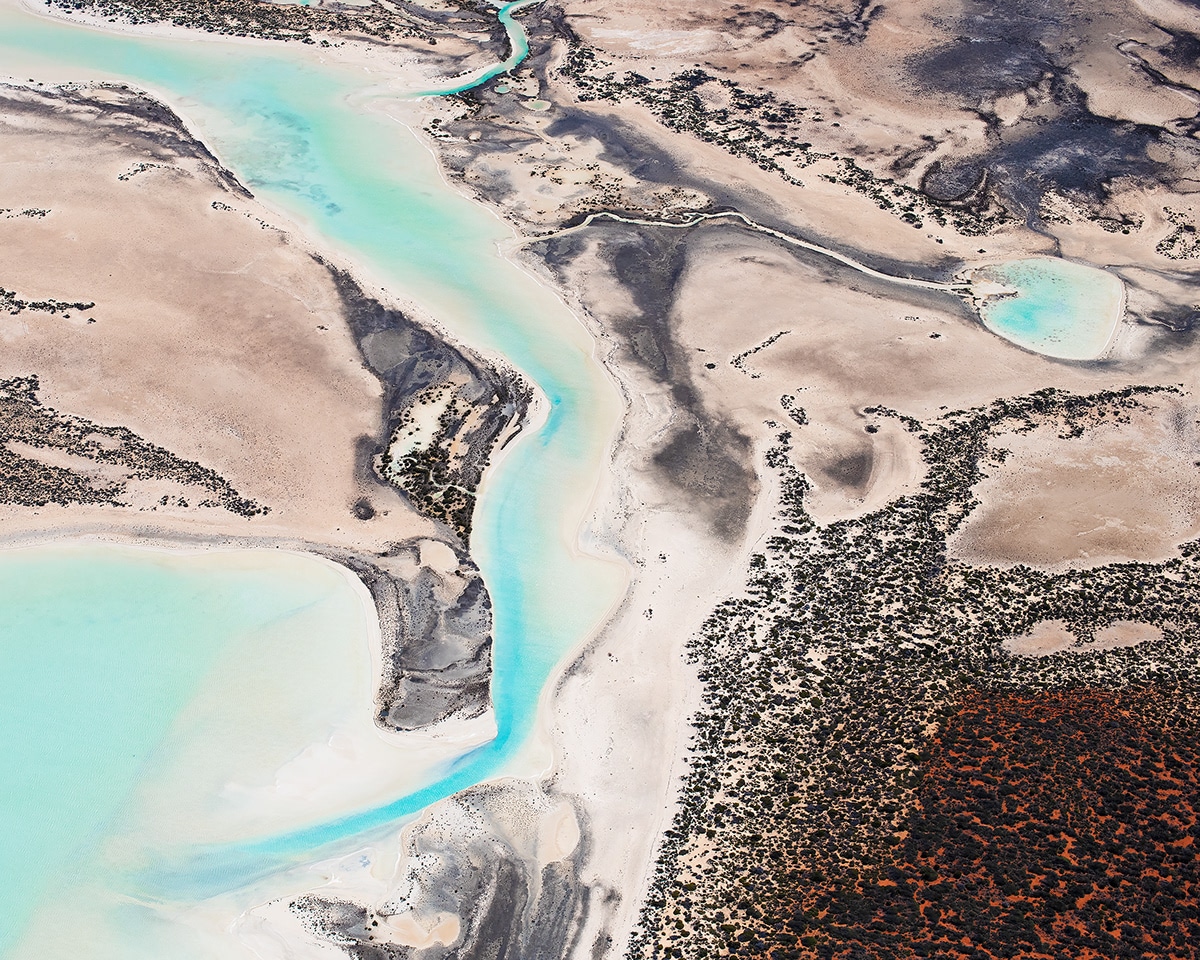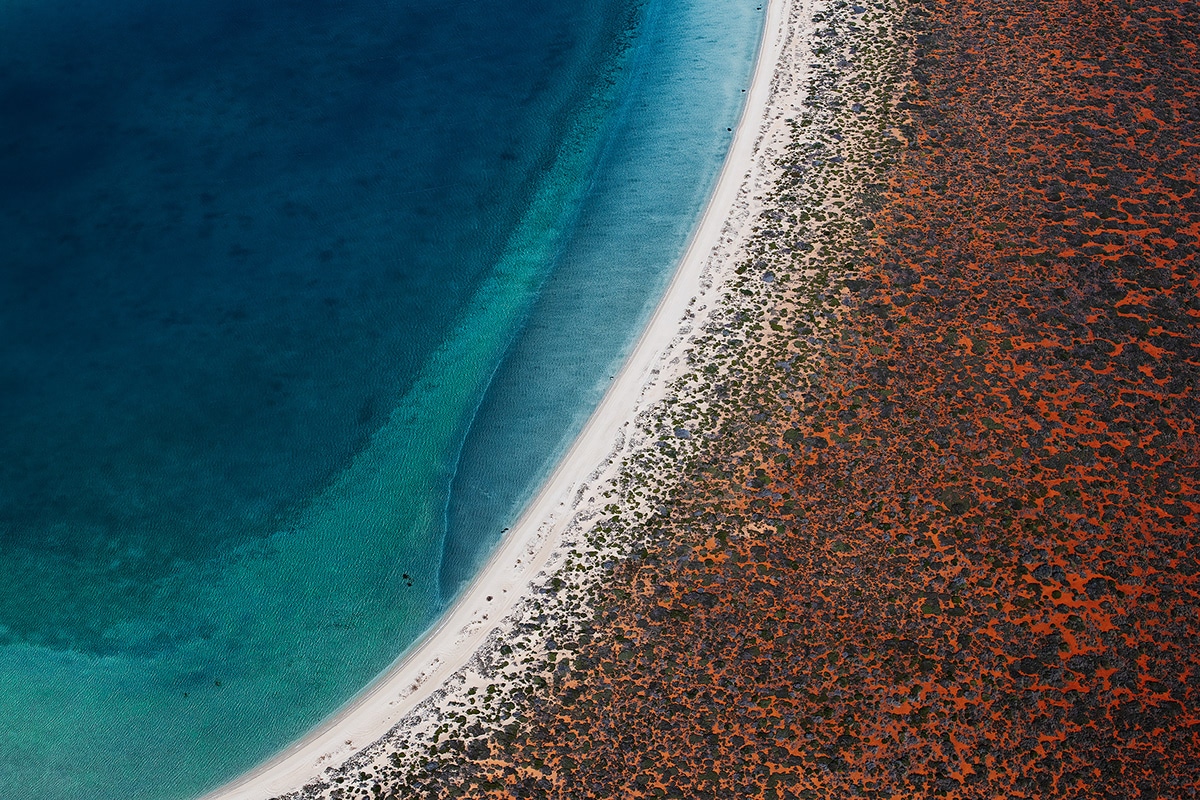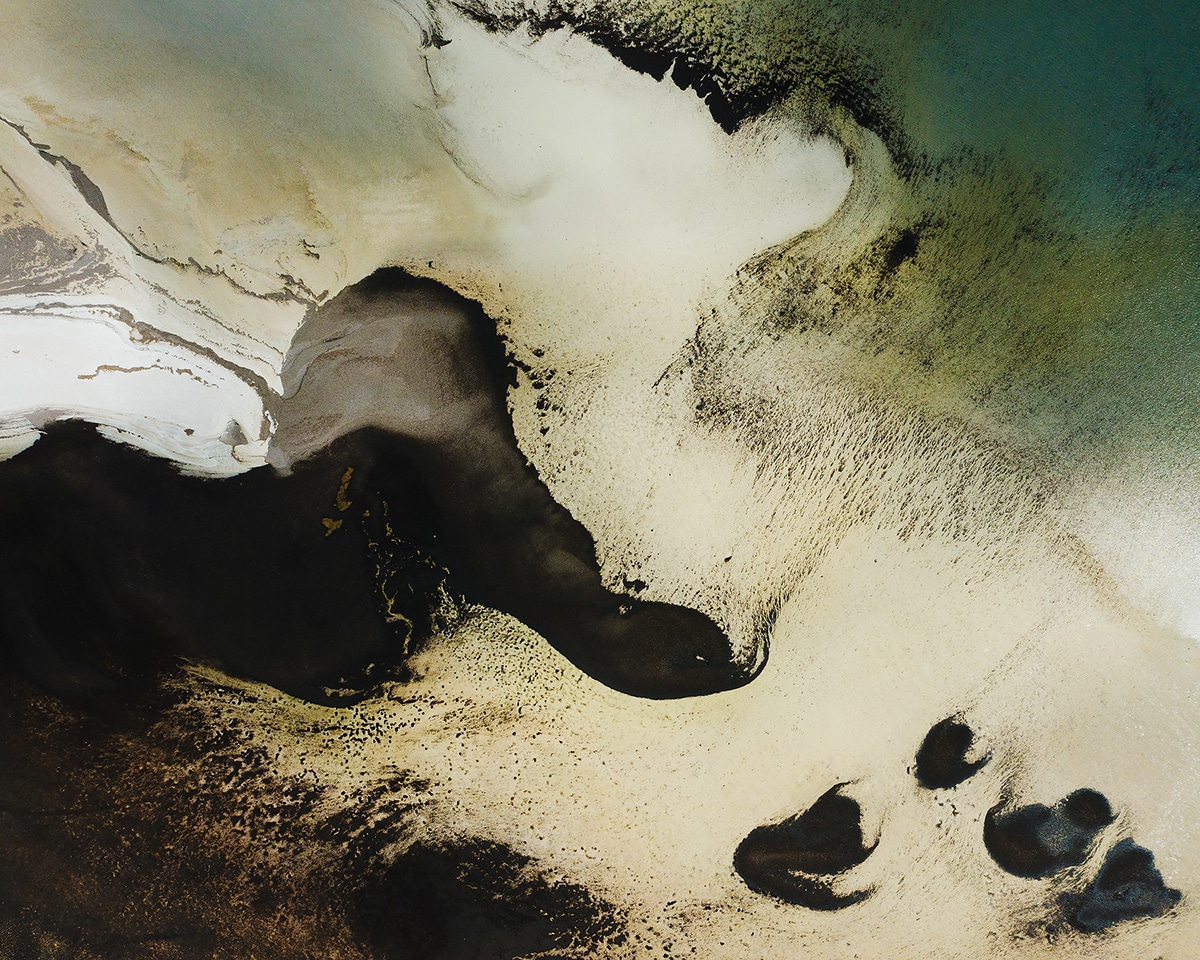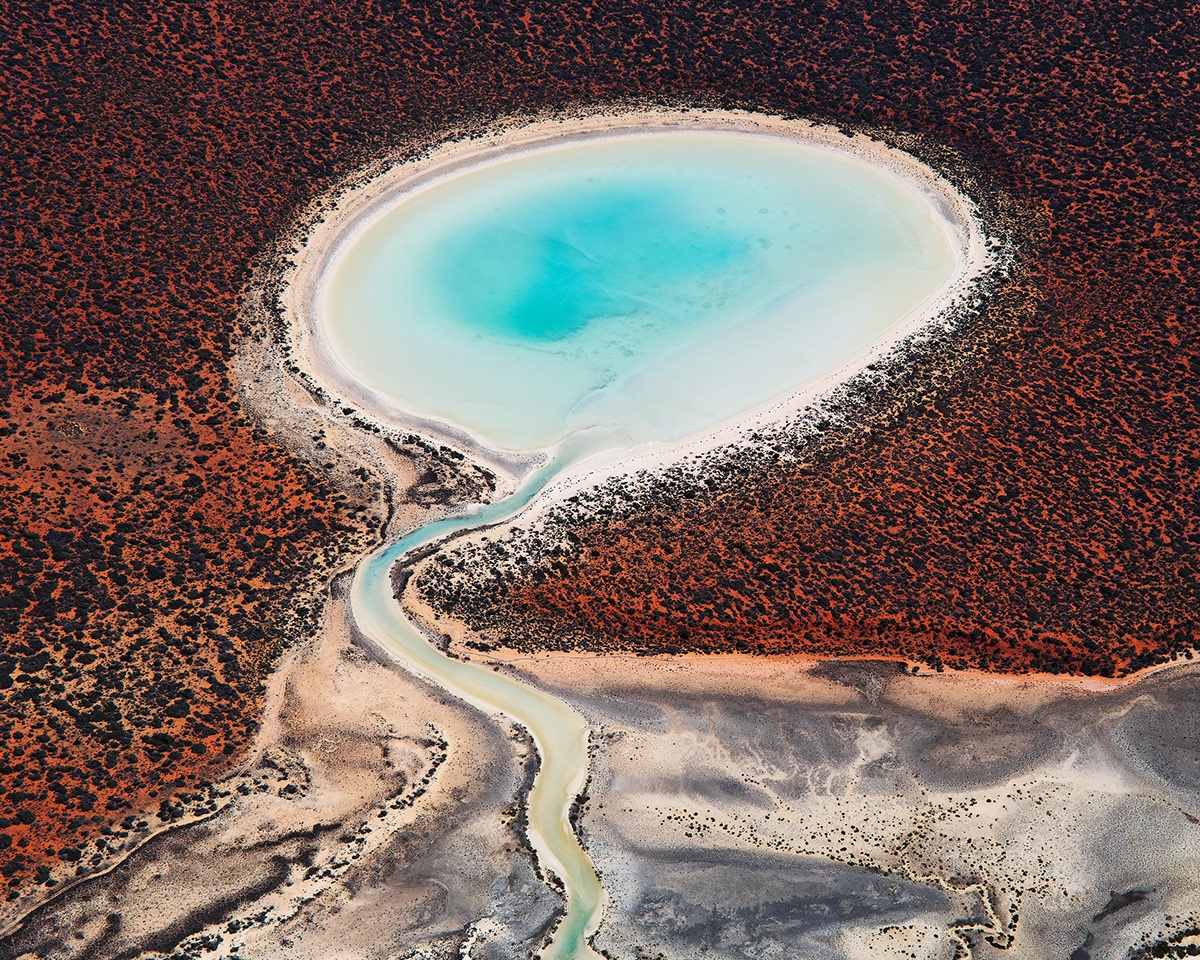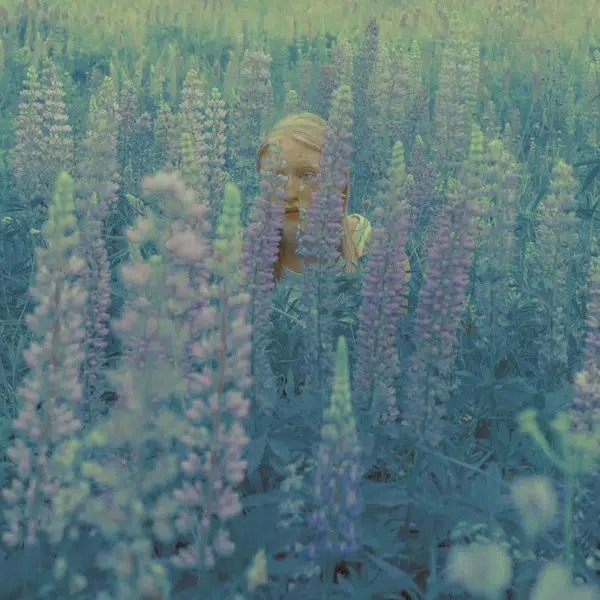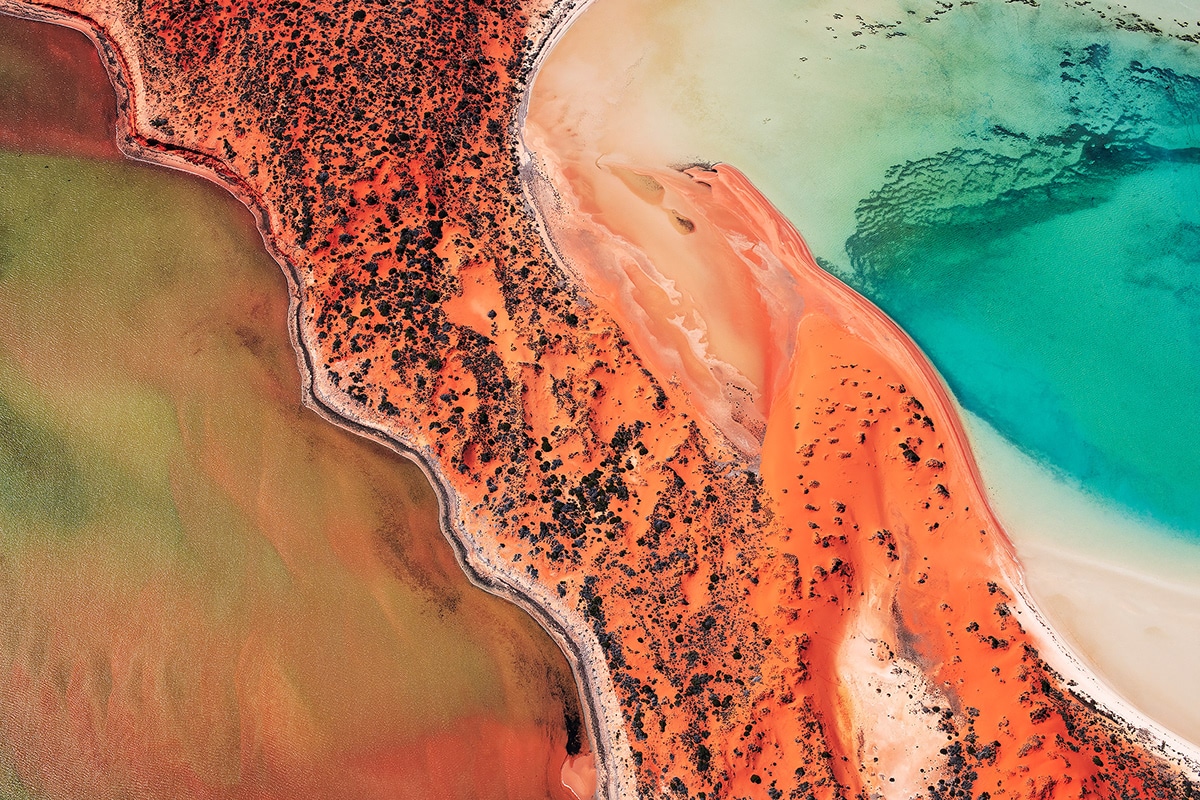
This post may contain affiliate links. If you make a purchase, My Modern Met may earn an affiliate commission. Please read our disclosure for more info.
The Shark Bay World Heritage site in Western Australia is one of most colorful and diverse landscapes in the world. Covering an area of more than 2.2 million hectares, it features rocky limestone cliffs, white bays, and rolling red sand hills, surrounded by turquoise blue waters. Photographer Jérôme Berbigier captures how this spectacular landscape looks from above, in a series of stunning aerial photos, aptly titled Shark Bay.
“Viewed from the sky, Shark Bay is a strangely organic landscape,” says Berbigier. “It's like looking down a microscope at the cellular structure of the continent. Geology becomes biology, as the salty hollows, connected to the lagoons and sea, remind us of the beginning of life.” Berbigier took to the skies in a small Cessna 172 plane, where he shot the rich colors and textures of the land below. The resulting series of images look just like vibrant, abstract paintings—the blue-green water merges with the multicolored land like paint on a canvas.
Berbigier’s images manage to capture both the serene and palpable energy of the land, a place that’s home to one of life’s earliest forms. “The connection of land and life is evident in this ancient place,” he says. “Once on the ground you can wander to the southern end of the bay where the stromatolites, one of the earliest known life forms on Earth, crowd together in the shallows.”
We recently caught up with Berbigier to ask about his experience shooting Shark Bay from above. Read on for My Modern Met's exclusive interview.
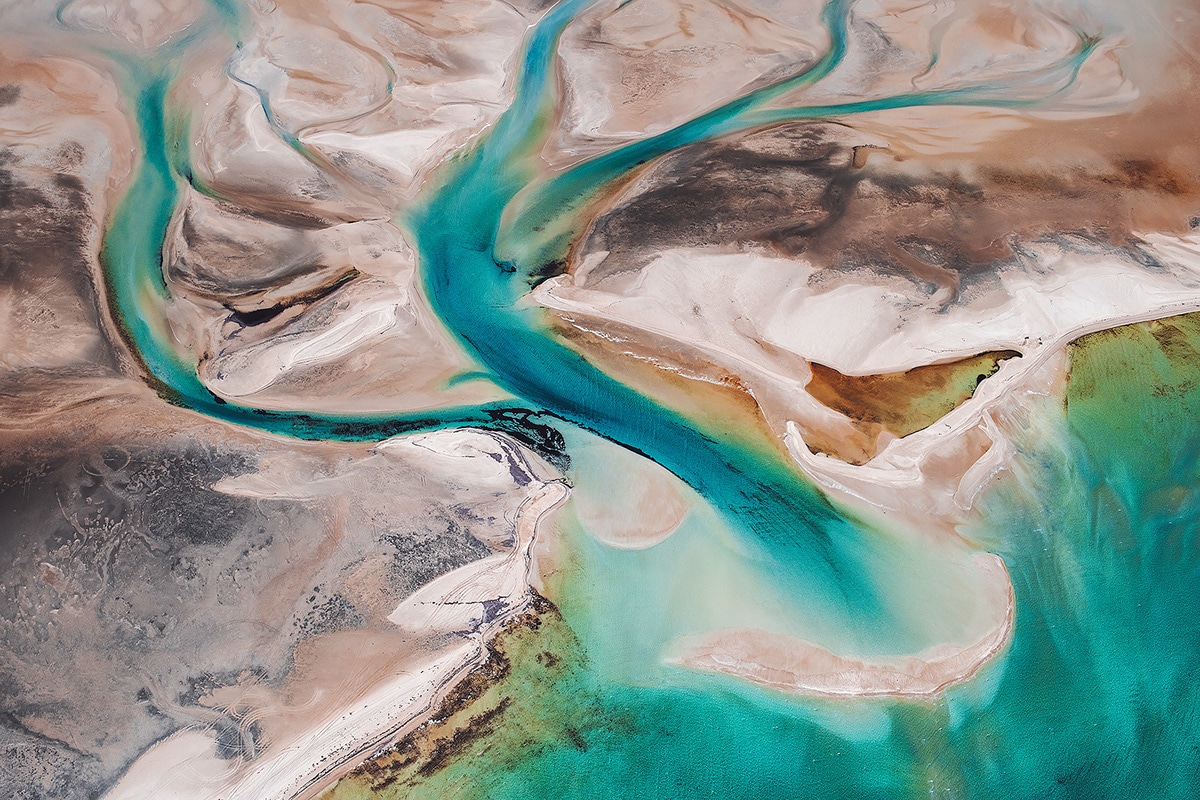
How did you first get into photography?
A little more than a decade ago, I got into photography after the start of the digital era. With this came the first photography sharing platforms. A new way of discovering the work of thousands of creative photographers, only one click away. That really helped me with composition, in camera and post-processing techniques. Browsing, trying new things, publishing, and getting feedback. I have never used a film camera.
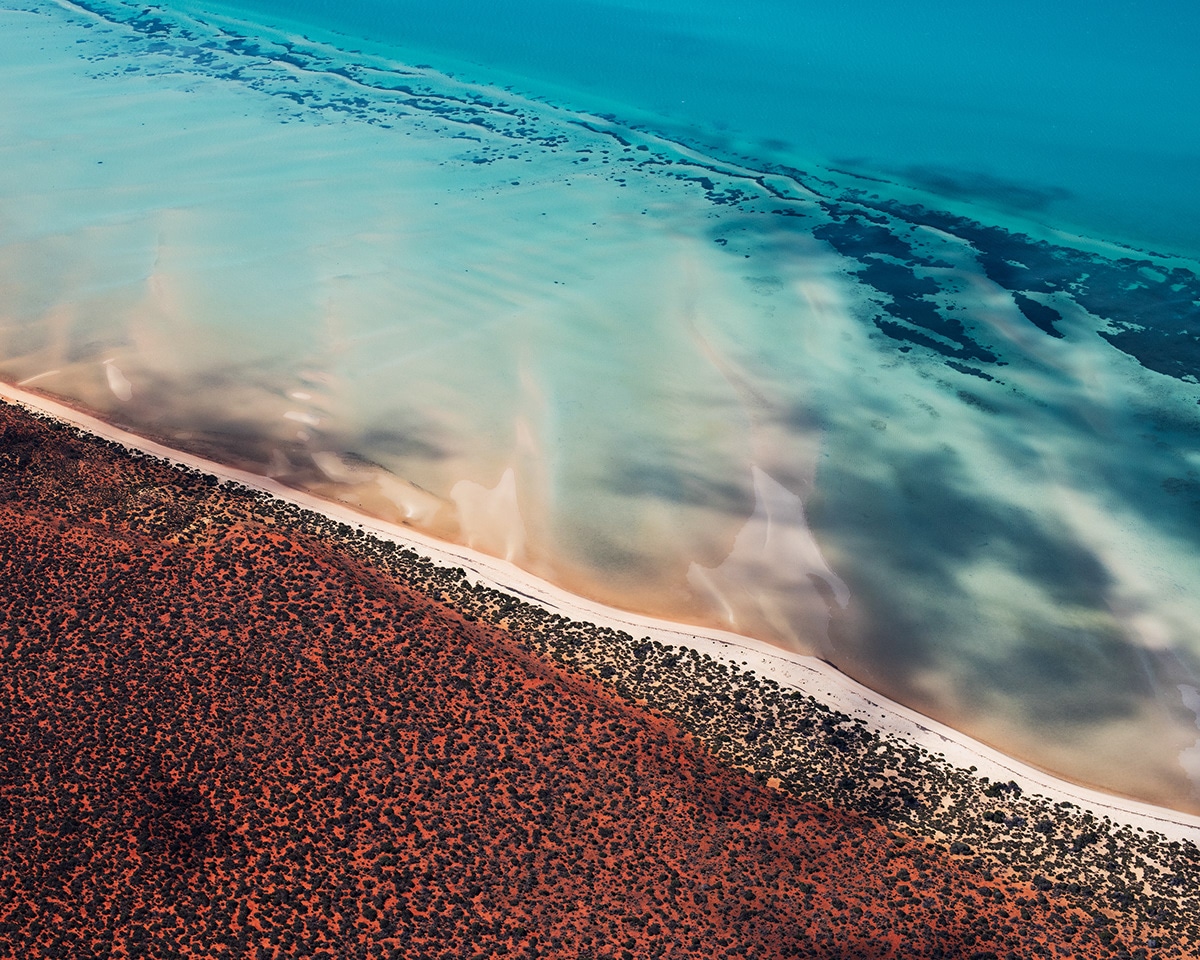
Do you remember the first landscape you photographed?
I don’t, but I do remember the first landscape photograph which got me some attention. The photo depicted one of the rock pools around Sydney’s beaches. A long exposure with a late blue hour atmosphere. A subject that has been over photographed, but this particular image had a very eerie and unique feel to it. The long exposure and dark blue light made it look incredibly surreal. I have a lot of long exposure photographs in my portfolio.
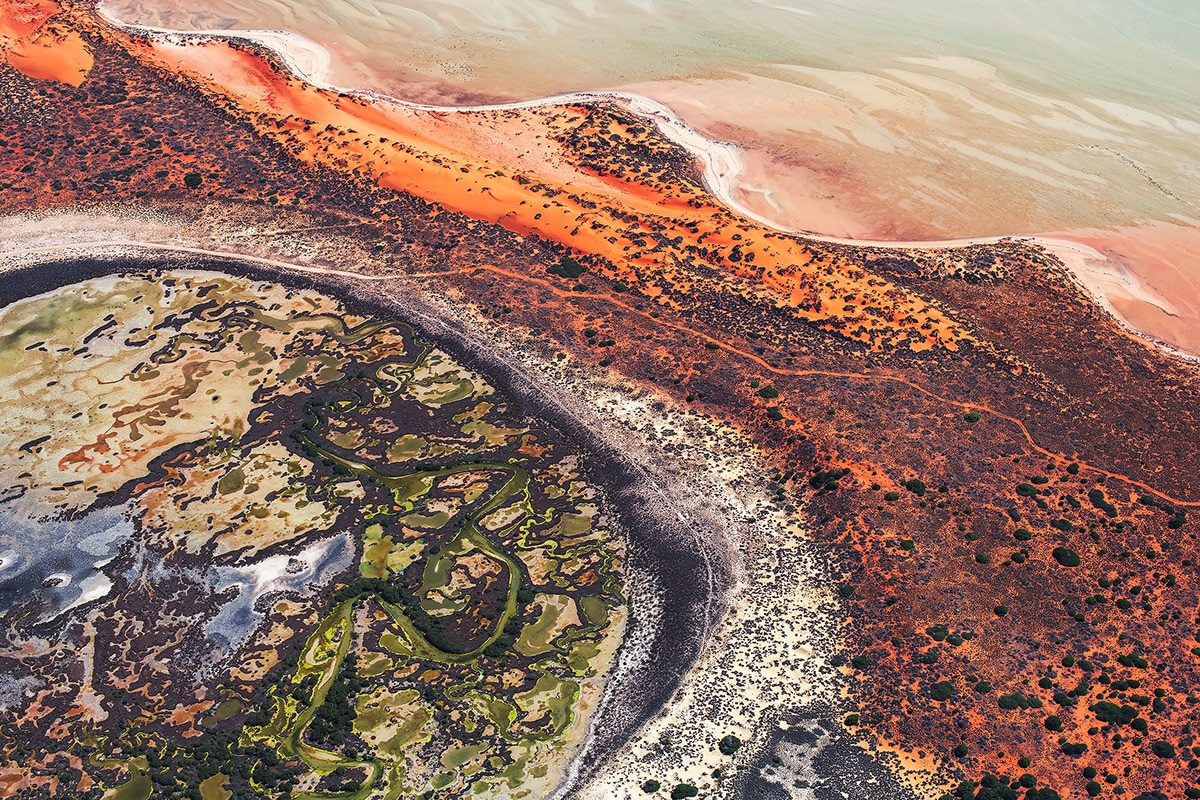
Why did you decide to shoot your Shark Bay series from above?
Australia has some of the most incredible landscapes in the world. It’s one of the few remaining countries with endless, wild, and colorful landscapes. Shark Bay is a World Heritage listed site. The diversity of its landscapes within a twenty five kilometers radius makes it a must visit for aerial photographers. You won’t find landscapes like these anywhere else. Funnily enough, I knew about the place long before I started taking photos, even before I knew much about Australia. I remember one of my school biology books had a picture of Shark Bay’s stromatolites, one of the earliest forms of life on earth. I found it fascinating how the landscapes of Shark Bay seem to be alive, from geology to biology.
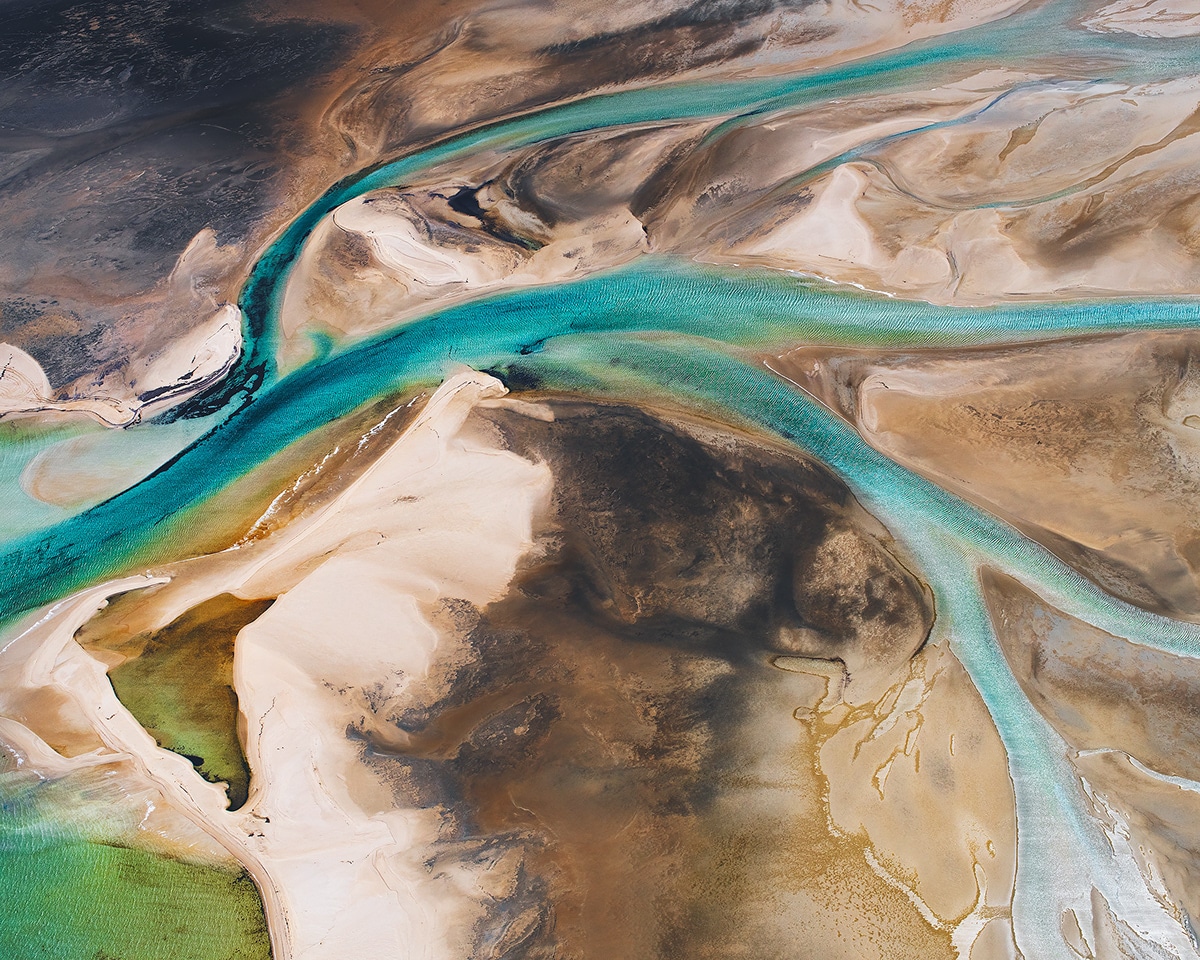
Can you describe your process for achieving your aerial photos?
I flew on a Cessna 172. You can fly on larger planes, with the back door removed, but the large open window on the 172 was more than enough for me. Not having the door open also means you are less in the wind, sharper photos, easier to change gears if you need to. The plane flew mostly at 1,500ft, the perfect altitude for most of Shark Bay’s landmarks. I used a Nikon D850 and Nikkor 50mm prime lens for this series. For aerial photography, you want high resolution and speed. Depth of field matters less as you often shoot straight down (looking at a flat surface). Some photographers hire super high resolution cameras (e.g: Phase One). For 1.5m prints, I had more than enough pixels on the Nikon D850 (46M). The prime lens helps with the speed and sharpness. I had a fantastic pilot, that makes a huge difference, he nailed all the angles for me, great communication. I also packed a drone, only two images in the series are shot with it. The drone is great when the plane isn’t an option.
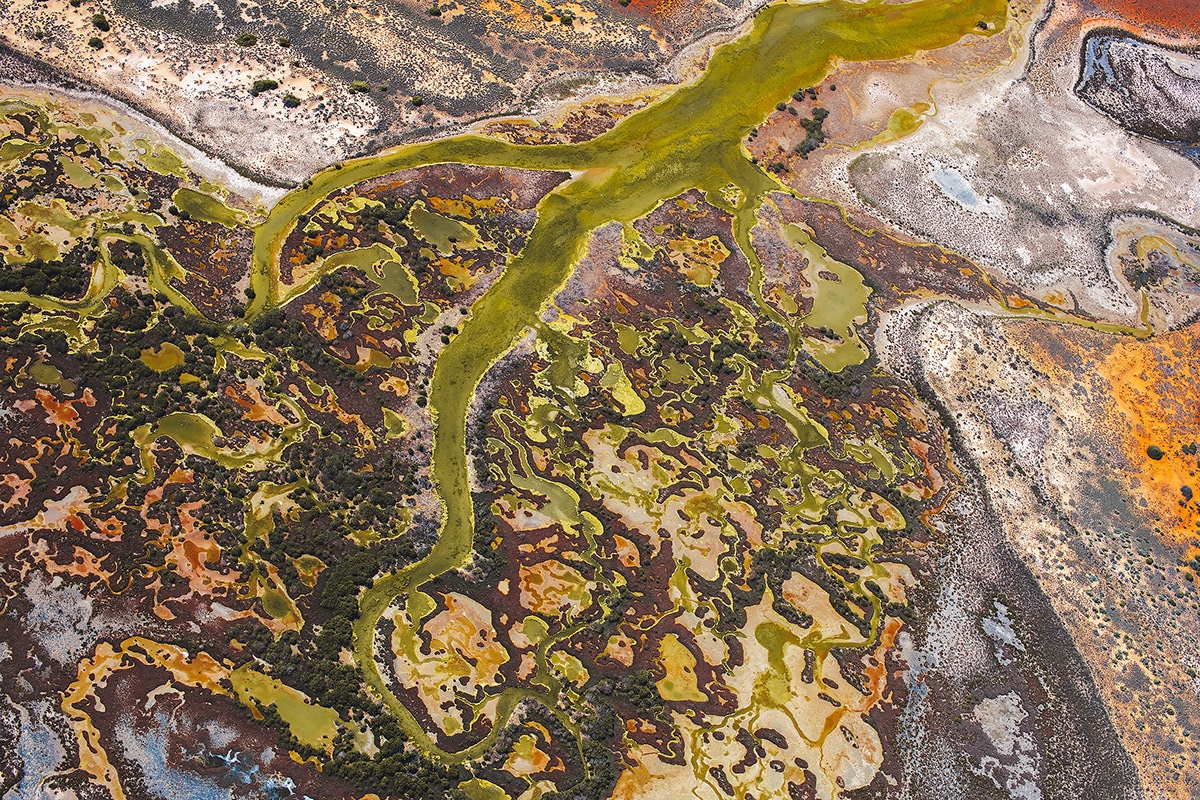
Why do you think you're drawn to capturing the land and the sea?
I am not sure, but nearly all my photos have land and sea in them. The sea makes it dynamic, you can photograph the same coastline 50 times and it will always look different with winds, waves, and tides. In Shark Bay, the colors are the most impressive where the land and the water meet. In the shallows are the highest contract and most beautiful patterns.
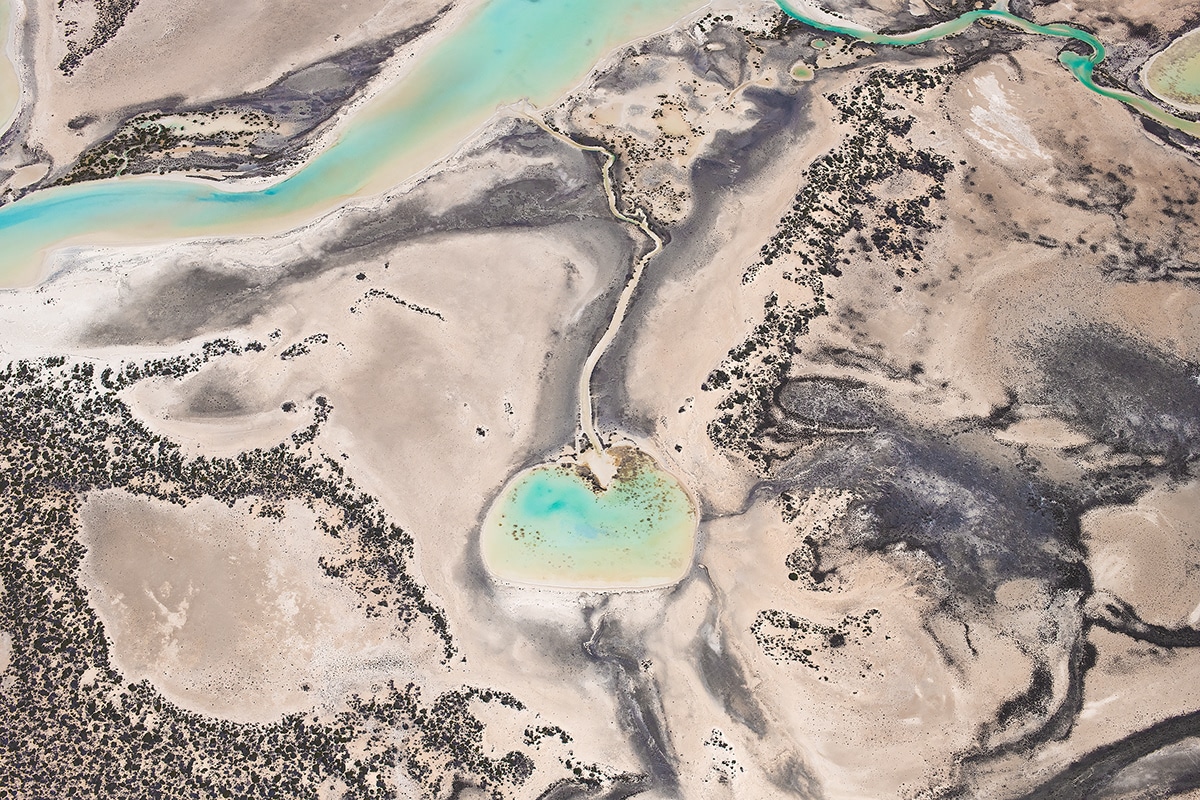
Where would you like to photograph next?
I wouldn’t mind going from hot to cold, and head towards the mountains. Chile would be on the list, and Patagonia of course. But I also wonder how many incredible places are untouched in regions like the Middle East. Pakistan for example has incredible landscapes.
